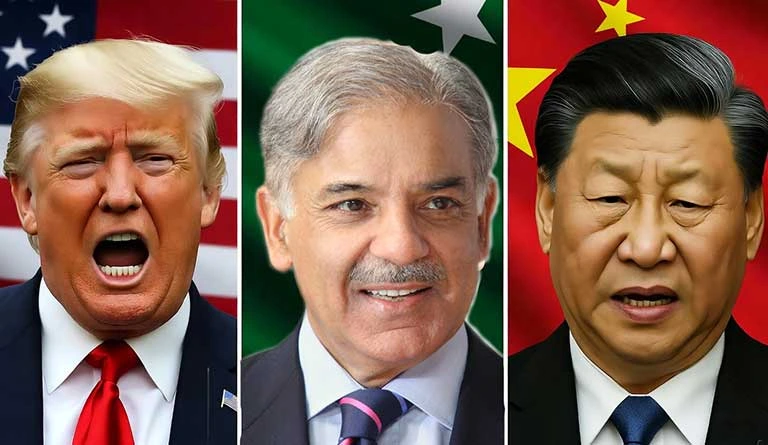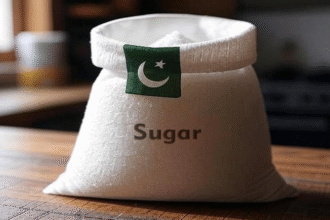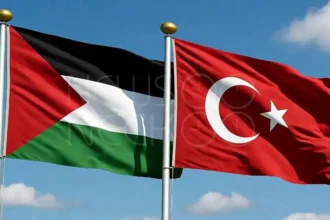Rare Earth Minerals: The Hidden Chokepoint in Global Technology
The term “rare earth minerals” often creates confusion these elements aren’t necessarily scarce in Earth’s crust, but they are economically challenging to extract and process efficiently. This group of 17 metallic elements, including neodymium, praseodymium, and scandium, has become the invisible foundation of modern technology. They are essential components in electric vehicles, wind turbines, smartphones, and advanced weapons systems, making them strategically critical for both economic and national security interests.
For decades, China has maintained a near-monopoly on this market, controlling approximately 70% of global extraction and over 85% of refining capacity . This dominance has given Beijing significant leverage in global trade dynamics, particularly as the world accelerates its transition to clean energy technologies.
Recent U.S.-China Trade Tensions: From Tariffs to Export Controls
The trade landscape has intensified significantly in recent months. Rather than generalized tariff threats, the current situation features targeted export controls from China. In October 2025, China expanded restrictions beyond raw materials to include technology, equipment, and labor used for refining rare earth elements . These measures represent a more sophisticated approach to maintaining control over the entire rare earth value chain.
The U.S. has responded with both defensive and offensive measures. The Department of Defense is accelerating efforts to stockpile $1 billion worth of critical minerals , while the Department of Energy has announced nearly $1 billion in funding opportunities to advance mining, processing, and manufacturing technologies across critical mineral supply chains . Simultaneously, major financial institutions like JPMorgan Chase have committed up to $10 billion in investments for national security-critical industries including critical minerals.
You Might Like Reading: Hidden Agenda behind SCO-SUMMIT in China
Pakistan’s Emergence as a Strategic Alternative
The most significant development that has altered the geopolitical calculus is Pakistan’s entry into the global critical minerals market. In September 2025, Pakistan and U.S. Strategic Metals (USSM) signed two memorandums of understanding establishing a $500 million partnership framework . This agreement covers joint development across the entire mineral value chain from exploration and beneficiation to concentrate production and eventual establishment of refineries in Pakistan.
The partnership yielded immediate results with Pakistan’s first shipment of critical minerals reaching the United States in October 2025. This inaugural delivery included:
- Rare earth elements: Neodymium and praseodymium (essential for powerful permanent magnets)
- Antimony (critical for flame retardants, batteries, and defense applications)
- Copper concentrate (fundamental for electrical infrastructure)
This shipment represents more than just a commercial transaction, it marks Pakistan’s emergence as what U.S. officials term a “credible and trusted partner” in building secure and diversified supply chains . The timing is particularly significant given that Chinese antimony exports declined 90.5% year-on-year in the January-August 2025 period compared to the same timeframe in 2024 .
Table: Key Elements in the Pakistan-U.S. Critical Minerals Partnership
| Component | Significance | Current Status |
|---|---|---|
| Financial Framework | $500 million investment across value chain | MOUs signed September 2025 |
| Initial Shipment | Antimony, copper, neodymium, praseodymium | Delivered October 2025 |
| Pakistan’s Resources | Estimated $6 trillion in rare earth reserves | Largely untapped potential |
| U.S. Dependence | No marketable antimony mined in 2023 | Seeking supply chain alternatives |
Geopolitical Implications: Pakistan’s Strategic Positioning
Pakistan’s mineral wealth estimated at up to $6 trillion in rare earth reserves positions it as a potential alternative to Chinese dominance. This development represents what trade experts call “friend-shoring” building supply networks among trusted partners with shared interests rather than pursuing complete self-sufficiency .
During Chief of Army Staff Asim Munir’s June 2025 visit to Washington, discussions reportedly touched on rare earth cooperation with U.S. companies , indicating the strategic importance both nations place on this partnership. As USSM CEO Stacy W. Hastie stated, this collaboration represents the “first step in our exciting journey together… to provide critical minerals to the United States and bolster economic trade and friendship between our two countries” .
Challenges and Opportunities Ahead
Despite the promising start, significant challenges remain for Pakistan to fully capitalize on its mineral wealth:
- Infrastructure and Technical Capacity: Rare earth processing requires sophisticated separation technologies that are capital-intensive and technically complex
- Security Concerns: Resource-rich regions like Balochistan face persistent instability
- Regulatory Framework: Pakistan must modernize mining laws and establish environmental standards
- Market Competition: China’s established dominance creates competitive pressures for emerging suppliers
The partnership addresses some challenges through its focus on technology transfer and capacity building, aiming to develop local processing capabilities rather than maintaining Pakistan as a mere source of raw materials .
Global Response and Market Impact
The market has responded strongly to these developments. Following announcements of the Pakistan-U.S. partnership and China’s expanded export controls, shares of U.S. rare earth miners surged in October 2025 . Critical Metals soared 55%, while MP Materials rallied about 21% , demonstrating investor confidence in alternative supply chains.
The Defense Department’s accelerated stockpiling of $1 billion worth of critical minerals further underscores the national security dimension of these supply chain shifts.
Conclusion: A New Geopolitical Equation
The emerging Pakistan-U.S. partnership in critical minerals represents more than just a commercial arrangement it signals a fundamental recalibration of global supply chains at a moment of intense geopolitical competition. As China tightens its export controls and the U.S. aggressively diversifies its sources, Pakistan has stepped onto the world stage as a potentially significant player in the high-stakes arena of critical minerals.
The coming months will test whether this framework can evolve into a durable alternative to Chinese dominance, but the initial shipment and partnership agreement mark a definitive shift in the geopolitical landscape. For Pakistan, this represents both an extraordinary economic opportunity and a strategic challenge—balancing relationships with both Washington and Beijing while overcoming domestic hurdles to transform mineral potential into tangible benefits.
This article has been updated to reflect developments through October 2025, incorporating the latest information on trade measures, market responses, and strategic partnerships shaping the global critical minerals landscape.
Author: Junaid Arif
Date: 14 Oct, 2025
For More Updates, Visit Newsneck













